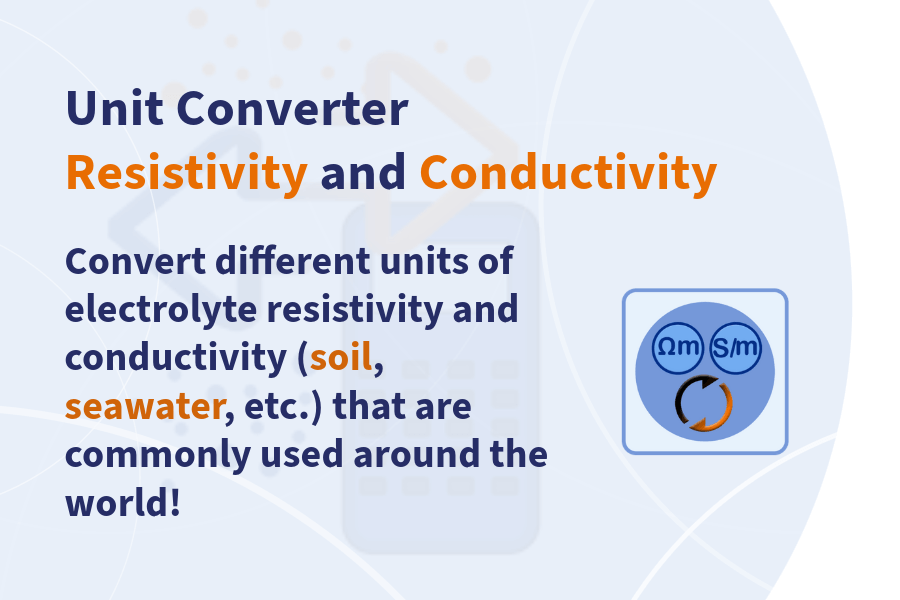
We use electrical resistivity in some calculations and measurements related to corrosion and cathodic protection and others related to conductivity. For this reason, converting them back and forth is sometimes necessary. Resistivity means resistance to passing current; however, conductivity is exactly the opposite. Their unit of measurement is simple and inverse: Resistance (Ω)= 1/Conductivity (Siemens or S).
Linear resistivity has the same concept as resistivity, and we can measure it using Cond. (S/m) = 1/Resistivity (Ω m). The common units of linear resistivity are Ω m, Ω cm, Ω in, Ω ft, while the common units of linear conductivity are S/m, S/cm, and the most famous one, µS/cm.
Converting Resistivity and Conductivity Example
For simplicity, we present some calculated examples for linear resistivity in the table below. You should use the table horizontally, so that each row shows a similar value. For example 1 Ω m = 100 Ω cm = 39.37 Ω in = 3.28 Ω ft = 1 S/m = 0.01 S/cm = 10000 µS/cm
| Ω m | Ω cm | Ω in | Ω ft | S/m | S/cm | µS/cm |
| 0.1 | 10 | 3.937 | 0.328 | 10 | 0.1 | 100000 |
| 1 | 100 | 39.37 | 3.28 | 1 | 0.01 | 10000 |
| 10 | 1000 | 393.7 | 32.8 | 0.1 | 0.001 | 1000 |
| 20 | 2000 | 787.4 | 65.6 | 0.05 | 0.0005 | 500 |
| 50 | 5000 | 1968.5 | 164 | 0.02 | 0.0002 | 200 |
| 100 | 10000 | 3937 | 328 | 0.01 | 0.0001 | 100 |
| 1000 | 100000 | 39370 | 3280 | 0.001 | 0.00001 | 10 |